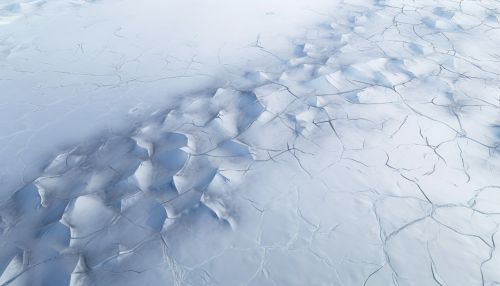Polar ice packs
Overview
Polar ice packs, also known as polar ice caps, are large areas of polar regions that are covered with ice. They are primarily located in the Arctic and Antarctic regions. Polar ice packs are significant features of our planet, playing a crucial role in the Earth's climate system. They reflect sunlight back into space, helping to regulate the Earth's temperature, and their meltwater contributes to global sea level rise.


Formation and Composition
Polar ice packs are formed from sea ice, which is frozen ocean water, and ice sheets, which are large masses of glacial land ice extending more than 50,000 square kilometers. The formation of sea ice begins when the sea surface freezes, usually starting along the coast. The process of ice sheet formation is more complex, involving the accumulation, compaction, and recrystallization of snow.
The composition of polar ice packs varies depending on the location and the type of ice. Sea ice is generally saltier than ice sheets, as it forms from ocean water. Ice sheets, on the other hand, are composed of fresh water, as they originate from snowfall.
Distribution and Extent
The Arctic ice pack is located in the Northern Hemisphere, encompassing the Arctic Ocean and its surrounding seas. The Antarctic ice pack is located in the Southern Hemisphere, surrounding the continent of Antarctica. The extent of these ice packs varies seasonally, with the maximum extent typically occurring in late winter and the minimum extent in late summer.
Impact on Climate
Polar ice packs have a significant impact on the Earth's climate. They act as a reflective mirror, bouncing back solar radiation into space, a phenomenon known as the albedo effect. This helps to cool the Earth's surface and regulate global temperatures. However, as the ice packs melt due to global warming, less sunlight is reflected back into space, leading to further warming in a feedback loop known as ice-albedo feedback.
Changes and Implications
In recent decades, polar ice packs have been shrinking at an alarming rate due to climate change. This loss of ice has far-reaching implications. It contributes to global sea level rise, threatens wildlife habitats, and impacts local communities and economies. Moreover, it can potentially alter ocean circulation patterns and weather systems around the world.
Conservation Efforts
Various conservation efforts are being undertaken to slow the melting of polar ice packs. These include reducing greenhouse gas emissions, promoting renewable energy, and implementing protective measures for polar ecosystems. However, these efforts face numerous challenges, including political, economic, and technological hurdles.
